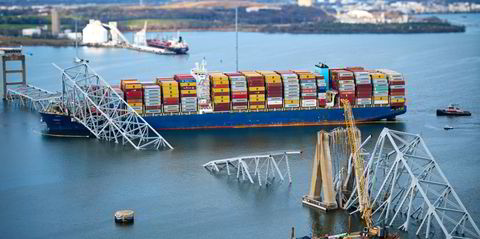Women in shipping remain underpaid and under-represented, according to new survey data, with the gender pay gap in UK companies three times as wide as the national average.
According to data compiled by HR specialist Spinnaker, there has also been little improvement in the number of women in top jobs in recent years despite companies often talking of their desire to change.
Figures showing the realities of women’s employment in the major maritime nation come in the week of International Women’s Day on 8 March, with other data suggesting the situation is little better in other shipping centres.
“It is very disappointing to see the gender pay gap in the maritime industry is nearly three times the national average,” said Monica Kohli, president of WISTA UK, the women’s shipping association that celebrates its 50th anniversary this year.
“The rate of change is very slow, and we would encourage the maritime industry to show leadership and take active steps to bring about effective change,” the lawyer with insurance giant Gard said.
Since 2017, large UK employers with more than 250 staff have been legally obliged to report their gender pay gap — the difference in average earnings between the men and women they employ. The numbers are publicly available.
Spinnaker analysed gender pay data from the members of its Maritime HR Association, a global club made up of 105 shipowners, ship managers and oil majors.
It found that in 2023 the mean gender pay gap reported by its 53 UK members was 38.25%, compared to a UK average of 13.2%.
The figure has not changed since Spinnaker first started analysing the gender pay gap in 2017. The percentage of women at the executive leadership team level has only increased from 10% to 15% in the same time period.
The wide pay gap shows the maritime sector has a real problem with recruiting and retaining female talent, said Lucy McQuillan, HR consultant at Spinnaker.
“We know there are various and complex reasons why women are not staying in the maritime industry, and enhanced maternity packages and flexible working policies are no longer going to cut it.
“Companies need to take action to create inclusive workplaces and ensure that diversity policies are embedded in their culture at all levels of the organisation.”
She added that it is well known that diversity within an organisation brings better financial results so “there is no reason for more maritime companies not to be implementing similar practices.”
Predominantly employed in support roles
The Spinnaker data showed that the UK tends to employ an equal proportion of men and women, although women are mostly found in secretarial, HR, marketing, finance, customer service and crewing positions.
Men are usually found in the technical and marine, shipbroker, chartering and freight trading positions, with only 20% of those positions held by women in Spinnaker’s global HR survey.
This picture translates to the executive leadership, where only 13% of CEOs reported in the survey globally are women, and the majority of women in the executive leadership team are found to hold the chief people officer position.
From the UK government website, TradeWinds analysed 2023 reported data from four high-profile maritime companies in different sectors.
At H Clarkson & Co — the shipbroker’s UK entity — women earn on average 24.4% less than men, women have 12.6% of the highest-paid jobs, 36.9% of the lowest-paid jobs, and average bonus pay 75% lower than men’s.
For class society Lloyd’s Register EMEA, the gender pay gap is 22.4%, with women occupying only 9.3% of the highest-paid jobs and 50.5% of the lowest.
The average bonus pay is 50.9% lower for women.
While at leading finance law firm Watson Farley & Williams LLP, women’s mean hourly pay is 18% lower than men’s, with bonuses also 18% lower.
At P&O Ferries, the gender pay gap is 28%, with women in 30% of the highest-paid jobs and 53% of the lowest.
In Singapore, the pay gap is 42% — excluding allowances — with 55% of the staff female. In Denmark and Canada, the pay gap is narrower at 27%.
Mary McDermott, head of HR for Navigator Gas and member of the Maritime HR Association, said: “The overarching goal for Navigator is 35% women in leadership by 2028, which we have committed to in a first-of-its-kind loan facility agreement.
“In November 2022, we had 20% and today we have 27% — great progress but we must focus on retention. DE&I [diversity, equity and inclusion] is a top People Strategy priority.”
Maternity transitions
Pacific Basin’s head of HR, PB Subbiah, said: “Our fundamental objective is to promote a culture where our female colleagues never have to leave their jobs subsequent to childbirth because the transitional challenges are too much to cope with. We want to help ease their transition back into full-time work.”
New mothers have the option of working from home with full pay for three months after the completion of their statutory maternity leave so that their transition back into full-time work is made more manageable, he said.
“We have gone from zero to over 65 female seafarers on our ships in the last four years and we conduct outreach programmes for secondary school girl students in collaboration with WISTA.”
International Women’s Day every 8 March dates back to 1911 and is not promoted by any specific organisation, group or country. It is based on a collaborative and community-based call to action for accelerating women’s equality.







